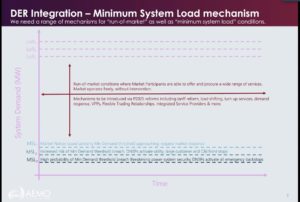The Australian Energy Market Operator says it is looking at more sophisticated and transparent solutions to the problem of maintaining minimum demand than simply forcefully shutting off rooftop solar, but warns without some sort of backstop it could lose control of the power system altogether.
Speaking at an event hosted by the Smart Energy Council on Tuesday, AEMO’s general manager of new market services Scott Chapman said the market operator is considering a tiered system that would make rooftop solar PV shut-off a last resort.
The comments relate to AEMO’s decision last year to implement regulations allowing it to effectively switch off rooftop solar in South Australia at times when behind-the-metre sources supply so much power there is no demand for utility-scale generators.
South Australia’s high levels of rooftop solar penetration mean it is ahead of the rest of the country. But with other states catching up, AEMO is actively considering more sophisticated methods to ensure there is always a minimum level of demand in the grid at all times, without alienating consumers or industry.
Chapman did not claim that AEMO’s initial blunt solution would end up being the best one. But he said the rapid growth in rooftop solar in South Australia had persuaded AEMO, the state government and grid operators that “we were all in a position where we needed to move very quickly”.
“That then takes us on to, where to from here? And in our collective minds I think that … now the arrangements are in place we all aim to improve those arrangements and methodologies … recognising that efficient and effective DER [distributed energy resource] is more than just backstops. We need a range of incentives, responses and tools.”

He said “some sort of mechanism” could be designed that sought to “give transparency, and some order for everyone in the market to a) have input into how it’s designed, and b) have a level of transparency about what it is happening at any given moment.”
Referring to the diagram above, he said: “The idea would be that when the system is not operating towards thresholds then it runs under normal ‘run of market’ conditions.”
But that would change when load started to drop. He said AEMO had designed three levels of “minimum system load” (see diagram). He said as the threshold was approached, signals would first be sent to market participants to encourage the market to find solutions to resolve the situation without forced curtailment.
“And then, as we get closer to the threshold, we start to avail ourselves of more of the mechanisms that we have put in place in South Australia, which are more along the lines of utility scale, industrial, commercial type solutions, where we’re doing everything from returning out of service feeders, through to instructing grid scale generators to curtail and all that kind of stuff that doesn’t move into end use consumer sphere.”
If all that failed to create sufficient minimum load, he said the final move would be “to implement a range of mechanisms at the bottom end” – a reference to the blunt method of forcefully switching off rooftop solar.
“If we don’t do that, it’s extremely probably that we will lose control of the power system,” he said. “And that would be, for example, a situation where demand goes so low that large synchronous plants fall off, Energy Connect is not yet built, and South Australia is islanded.”







